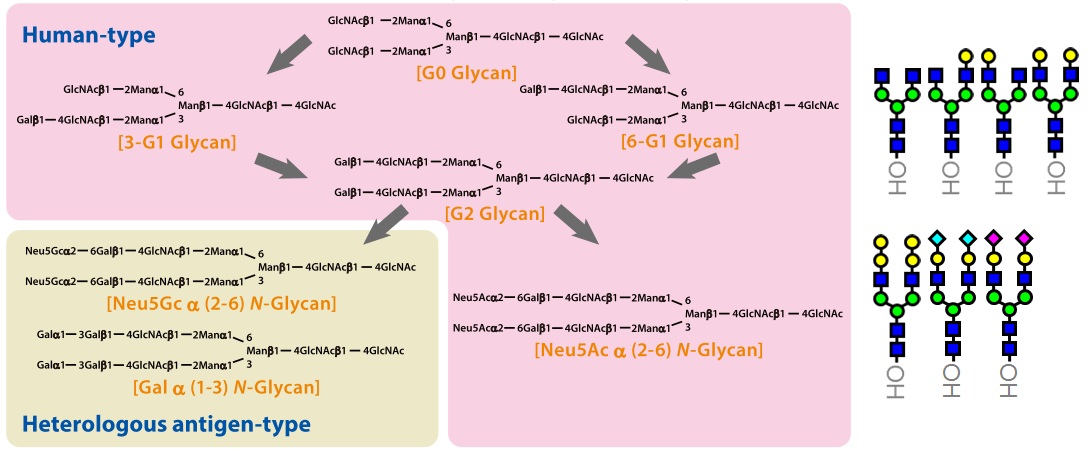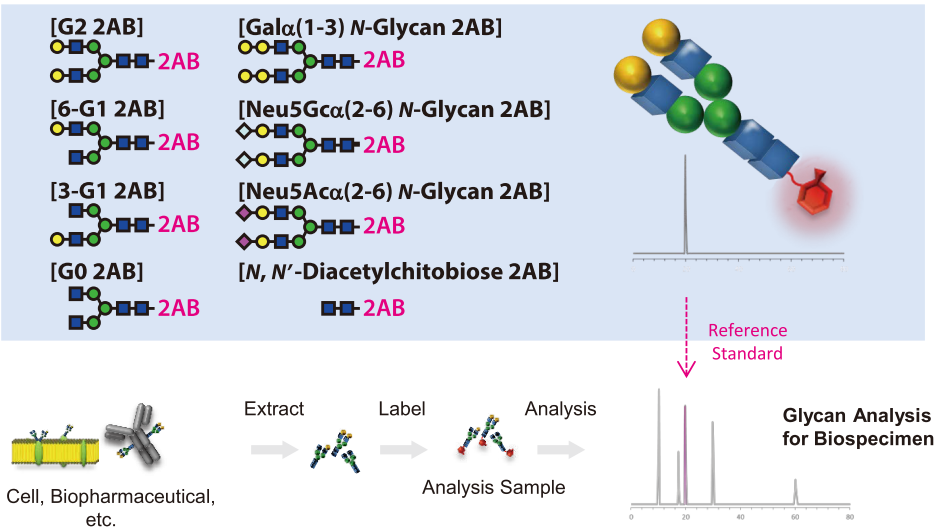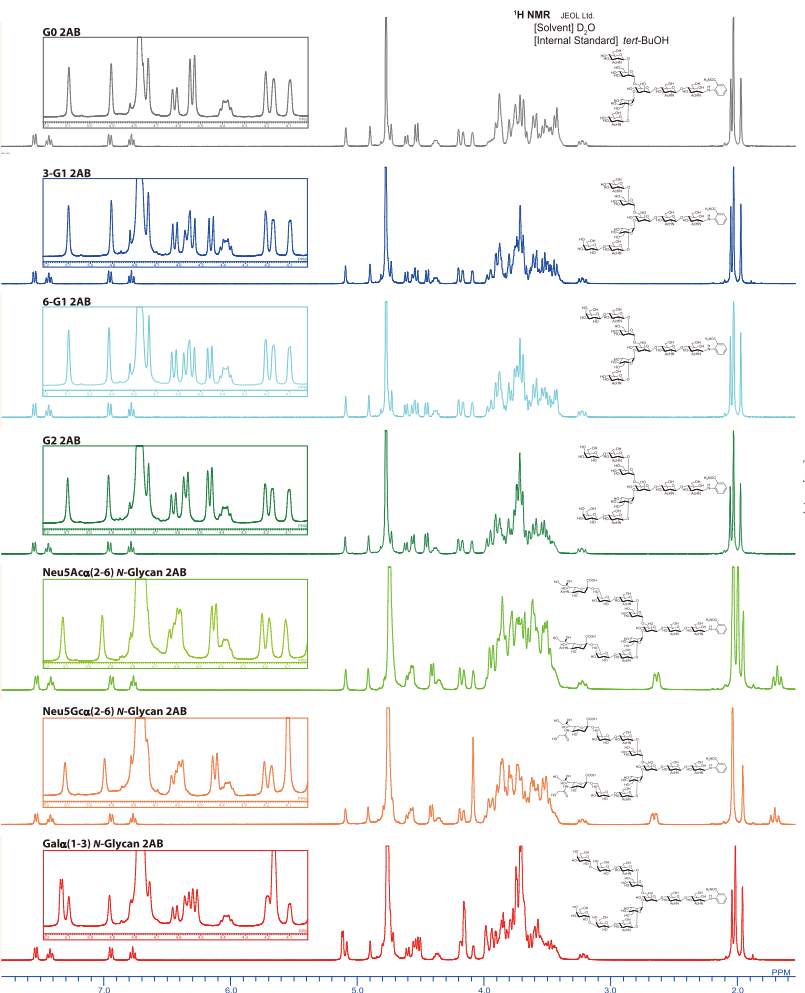Make sure to sign up for an account today for exclusive coupons and free shipping on orders over $75!
Maximum quantity allowed is 999
N-Glycan
TCI provides the structure-defined N-glycans such as human type glycans (G0, G2 and SG), uniform isomers (each 3-G1 and 6-G1) and heterogenic antigens (including αGal or NeuGc) which are chemically synthesized.

Products
Labeled N-Glycan
We produce high grade 2-AB labeled N-glycans based on chemical synthetic technology. Please take advantage of our fluorescent-labeled product portfolio as standard glycans for MS, CE and HPLC analyses.

Products
Features and Applications of N-Glycan / Labeled N-Glycan based on Chemical Synthesis
Features
- Differential synthesis of uniform isomers (3-G1 and 6-G1)
- Unique N-glycans including heterogenic antigens
- Purity >95% by HPLC
- Structure determination with NMR and MS analyses
Applications
N-glycan analysis for biopharmaceuticals and glycoproteins
- Reference standard for HPLC, CE and MS analyses
- Quantitative and qualitative analyses of N-glycans derived from therapeutic antibodies and other glycoproteins

Glycans on cell surface involve various physiological functions (e.g., cancer, infectious disease, aging, etc.). There are a lot of knowledge of N-glycan analysis, and the major method of N-glycan analysis is comparison between the reference standards and the labeled N-glycans released from biopharmaceuticals and biological samples by MS, CE and HPLC. The more accurately quantitative data for analysis of isomer glycans and detection of heterogenic antigens will be obtained according to our products.

Example of Use of Labeled N-Glycan
HPLC analyses of uniform isomer ([6-G1 2AB]/[3-G1 2AB]) and heterogenic antigen ([Galα(1-3) N-glycan 2AB]/[Neu5Gcα(2-6) N-glycan 2AB]) provided by chemical synthesis

Related Product Spotlight Page
Product Brochure
A part of the products is commercialized by support from the developing key technologies for discovering and manufacturing pharmaceuticals used for next-generation treatments and diagnoses both from the Ministry of Economy, Trade and Industry, Japan (METI) and from Japan Agency for Medical Research and Development (AMED).




